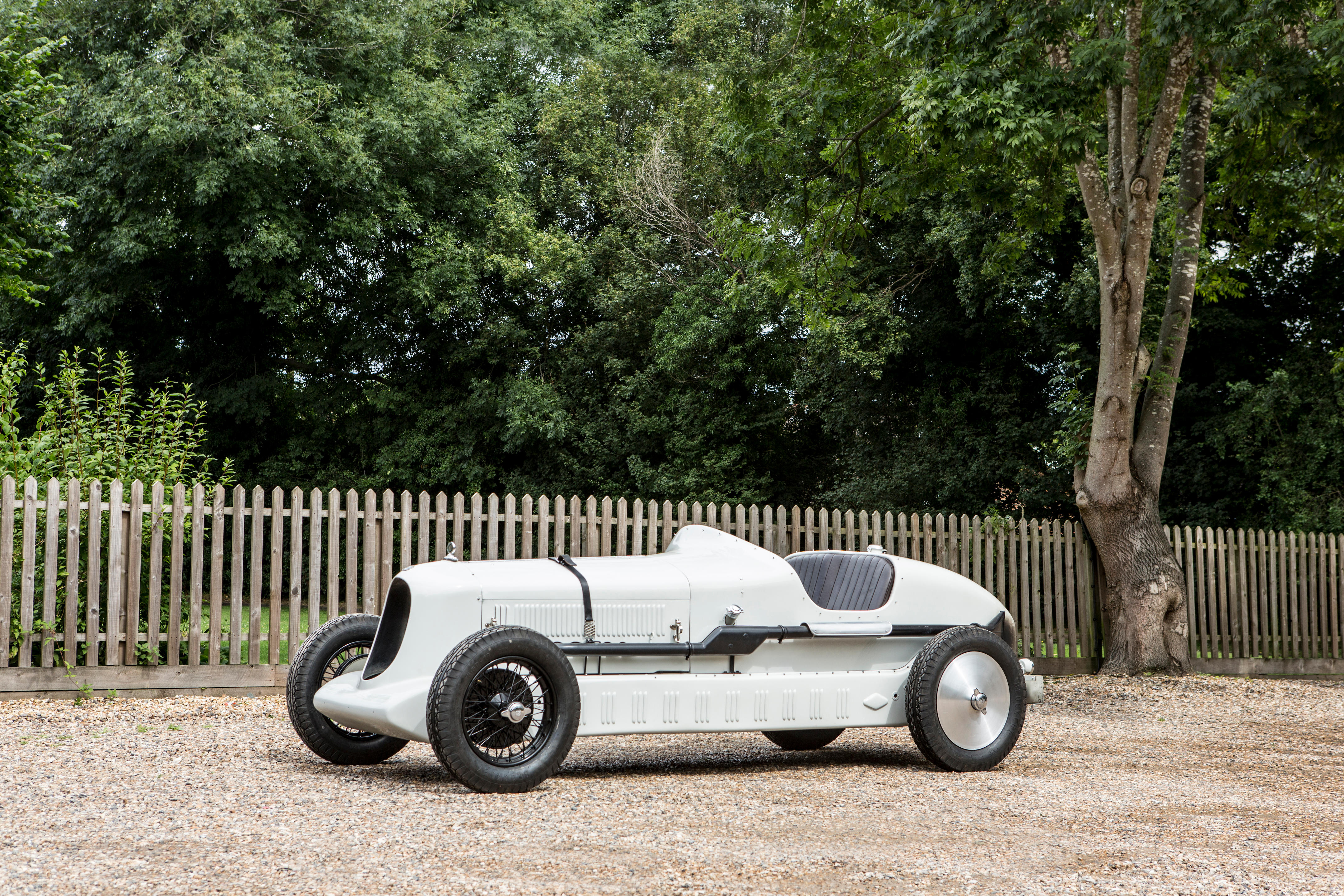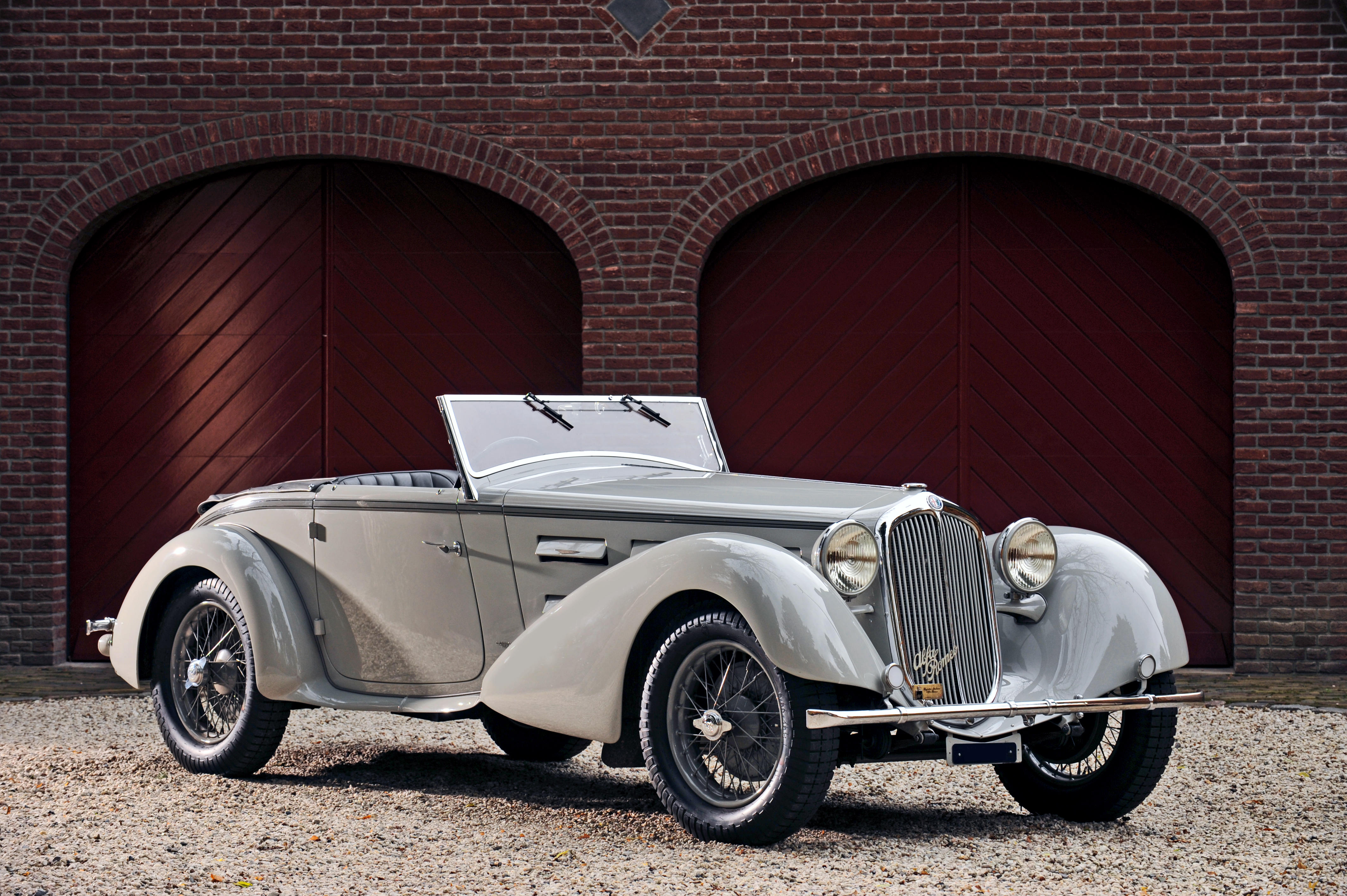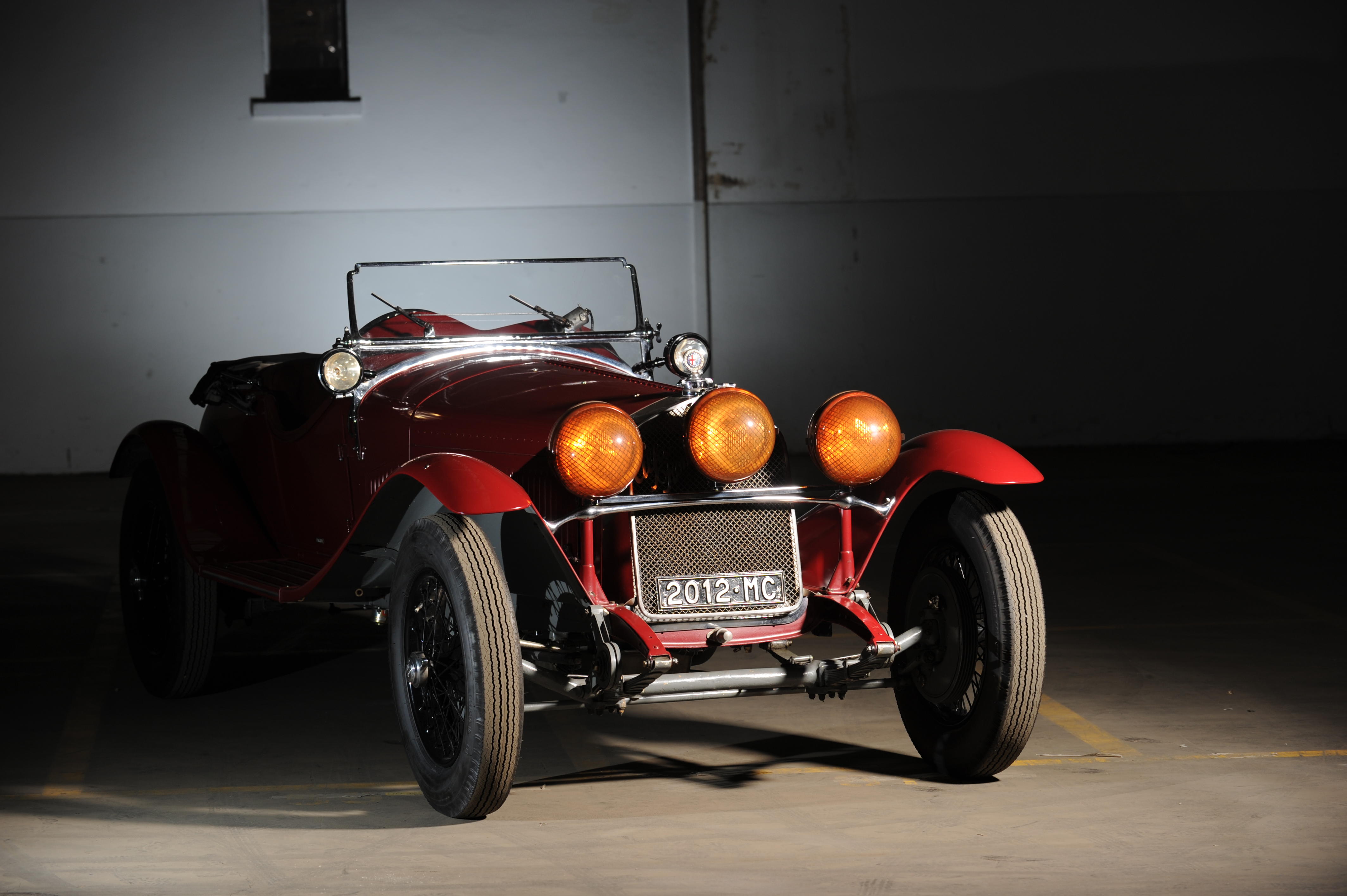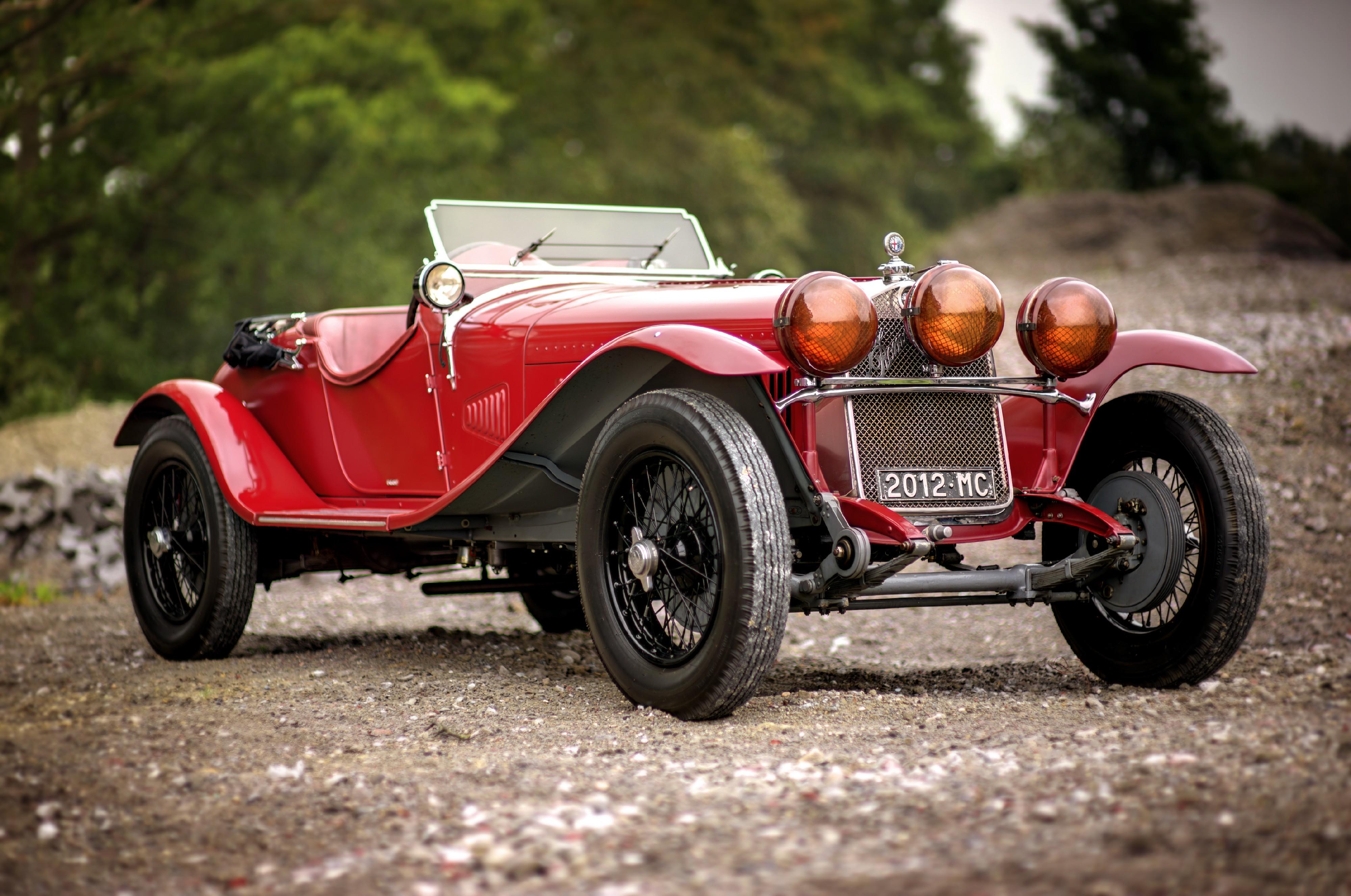Think Alfa 1750, think Zagato or Touring. But Kentish coachbuilders James Young were major contributors to its legacy, too Vittorio Jano was a hugely successful pre-war engineer with the like of Grand Prix Alfa Romeos, the P2 and Tipo B which preceded and sired the legendary 6C and 8C road cars. These were followed post-war, firstly by Lancia's Aurelia and D-series racers then the immortal Dino V6 and the 1.5-litre V8 that won Ferrari the 1964 F1 world championship. All of them were kissed by his genius and bore his imprimatur. The Alfa 6C 1500, introduced in 1927, spawned a family which proliferated into a bewildering array of variants when, in 1929, the original 1487cc, five-main bearing straight-six grew to 1752cc, creating the 1750 model. Versions with both single and twin OHC valve gear were offered, plus a muscular compressore, blown by a Roots-type supercharger. Power ranged from an underwhelming 46bhp in the first SOHC variants to a rather lustier 85bhp from the stock blown twin-cam. Produced in four series (S3 to S6 inclusive, the first two series being the 1500s) between 1929 and 1933, the range of saloons, cabriolets and two-seater Spider models encompassed Turismo, Gran Turismo, Super Sport and Gran Sport variants, all but the early Turismos equipped with the twin-cam heads with four intermediate power outputs being quoted for the various series and versions. Performance was as much about weight as about power and the lithe, relatively spartan Spiders were had a significant advantage in this respect over the more substantial tourers such as the one you see here. This was due not just to heavier bodywork, but also to the sumptuous interiors that Bromley-based James Young provided. Thick pile carpets, generously padded leather upholstery and lashings of real wood were what you'd expect of a company with strong Rolls-Royce and Bentley connections. And all are proudly in evidence in this 1930 fifth-series Gran Turismo, chassis no. 10914488, belonging to brothers Mike and Mark Toynbee. It has been in their family for 56 years, and has just emerged from a 20-year restoration. "My father bought the car in 1958 and, as far as I recall, he paid £100 cash for it - and there might have been a trade-in of some old banger," recounts Mike. Toynbee is the second name in the old buff log-book, the first being the recipient of the banger and cash, the exotic-sounding Elsa Ruth Angier, who had acquired it on December 30th 1940. Its history prior to that is opaque, although Mike is clear on one thing: "It left the factory in December 1930, went to James Young and was first registered in April or May 1931." 'It', of course, was the bare chassis and drive-train (priced at 42,000 lire), which was very probably driven, as was customary at the time, from the Portello factory all the way to Alfa's UK concessionaires, Messrs. F. Stiles, of No 1, Baker Street, NW1 and thence to Bromley. Here, its cabriolet coachwork - sheet metal over a sturdy ash frame - and all the final trimming was completed before its return to Stiles for sale. By the time Mr Toynbee Senior bought it, it was a bit tired ("I think it had been painted with emulsion", recalls Mike) but he used it on a daily basis for around 18 months or so before it finally cried 'enough'. "Then", Mike continues, "he started to work on it - he bought a new set of pistons - but then it went into the garage and stayed there for 30 years, deteriorating even more. When he died in 1993 we decided it would be nice to keep the car and try and get it back on the road." Having decided to 'do the job properly', the first thing was to remove the body from the chassis - at which point the remains of the wooden frame just disintegrated, so it was back to the ash grove. At least most of the car was complete. "It is pretty original," says Mike. "The wings and the door panels have all been repaired rather than replaced, so I'd say it's probably about 90 per cent original. The box on the back was
Think Alfa 1750, think Zagato or Touring. But Kentish coachbuilders James Young were major contributors to its legacy, too Vittorio Jano was a hugely successful pre-war engineer with the like of Grand Prix Alfa Romeos, the P2 and Tipo B which preceded and sired the legendary 6C and 8C road cars. These were followed post-war, firstly by Lancia's Aurelia and D-series racers then the immortal Dino V6 and the 1.5-litre V8 that won Ferrari the 1964 F1 world championship. All of them were kissed by his genius and bore his imprimatur. The Alfa 6C 1500, introduced in 1927, spawned a family which proliferated into a bewildering array of variants when, in 1929, the original 1487cc, five-main bearing straight-six grew to 1752cc, creating the 1750 model. Versions with both single and twin OHC valve gear were offered, plus a muscular compressore, blown by a Roots-type supercharger. Power ranged from an underwhelming 46bhp in the first SOHC variants to a rather lustier 85bhp from the stock blown twin-cam. Produced in four series (S3 to S6 inclusive, the first two series being the 1500s) between 1929 and 1933, the range of saloons, cabriolets and two-seater Spider models encompassed Turismo, Gran Turismo, Super Sport and Gran Sport variants, all but the early Turismos equipped with the twin-cam heads with four intermediate power outputs being quoted for the various series and versions. Performance was as much about weight as about power and the lithe, relatively spartan Spiders were had a significant advantage in this respect over the more substantial tourers such as the one you see here. This was due not just to heavier bodywork, but also to the sumptuous interiors that Bromley-based James Young provided. Thick pile carpets, generously padded leather upholstery and lashings of real wood were what you'd expect of a company with strong Rolls-Royce and Bentley connections. And all are proudly in evidence in this 1930 fifth-series Gran Turismo, chassis no. 10914488, belonging to brothers Mike and Mark Toynbee. It has been in their family for 56 years, and has just emerged from a 20-year restoration. "My father bought the car in 1958 and, as far as I recall, he paid £100 cash for it - and there might have been a trade-in of some old banger," recounts Mike. Toynbee is the second name in the old buff log-book, the first being the recipient of the banger and cash, the exotic-sounding Elsa Ruth Angier, who had acquired it on December 30th 1940. Its history prior to that is opaque, although Mike is clear on one thing: "It left the factory in December 1930, went to James Young and was first registered in April or May 1931." 'It', of course, was the bare chassis and drive-train (priced at 42,000 lire), which was very probably driven, as was customary at the time, from the Portello factory all the way to Alfa's UK concessionaires, Messrs. F. Stiles, of No 1, Baker Street, NW1 and thence to Bromley. Here, its cabriolet coachwork - sheet metal over a sturdy ash frame - and all the final trimming was completed before its return to Stiles for sale. By the time Mr Toynbee Senior bought it, it was a bit tired ("I think it had been painted with emulsion", recalls Mike) but he used it on a daily basis for around 18 months or so before it finally cried 'enough'. "Then", Mike continues, "he started to work on it - he bought a new set of pistons - but then it went into the garage and stayed there for 30 years, deteriorating even more. When he died in 1993 we decided it would be nice to keep the car and try and get it back on the road." Having decided to 'do the job properly', the first thing was to remove the body from the chassis - at which point the remains of the wooden frame just disintegrated, so it was back to the ash grove. At least most of the car was complete. "It is pretty original," says Mike. "The wings and the door panels have all been repaired rather than replaced, so I'd say it's probably about 90 per cent original. The box on the back was















Testen Sie LotSearch und seine Premium-Features 7 Tage - ohne Kosten!
Lassen Sie sich automatisch über neue Objekte in kommenden Auktionen benachrichtigen.
Suchauftrag anlegen